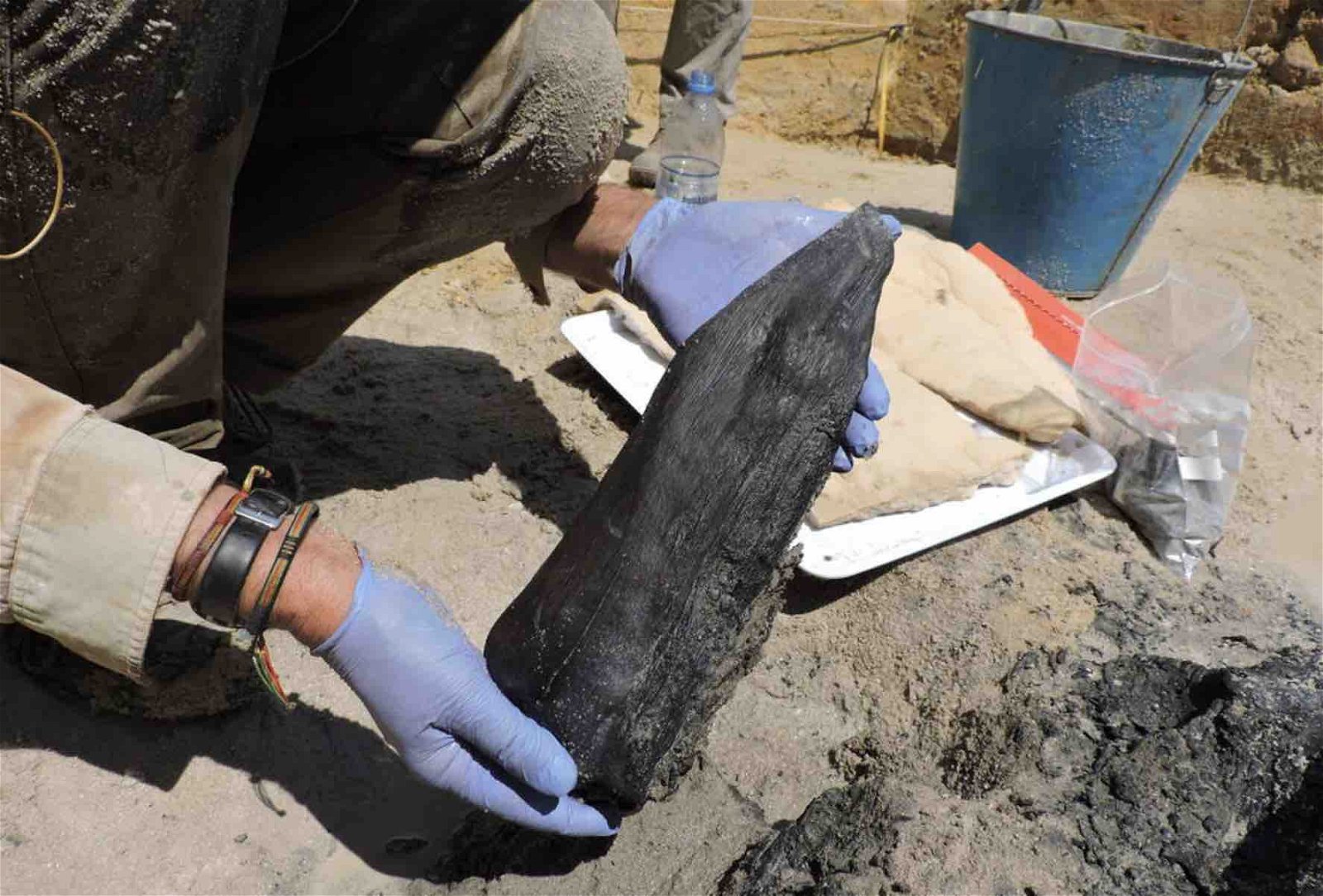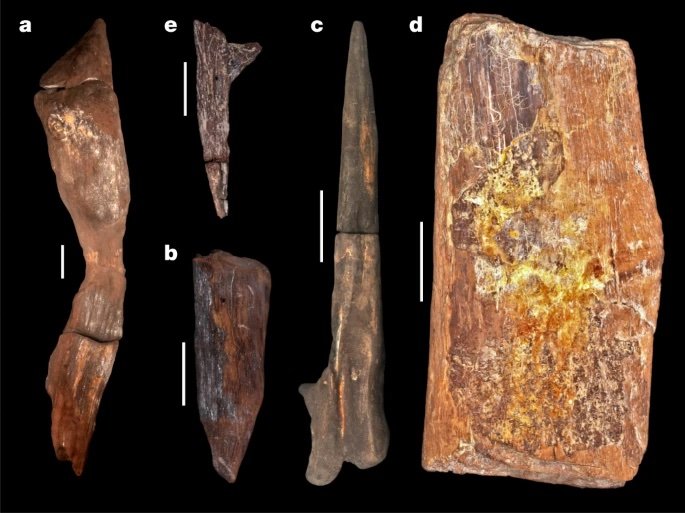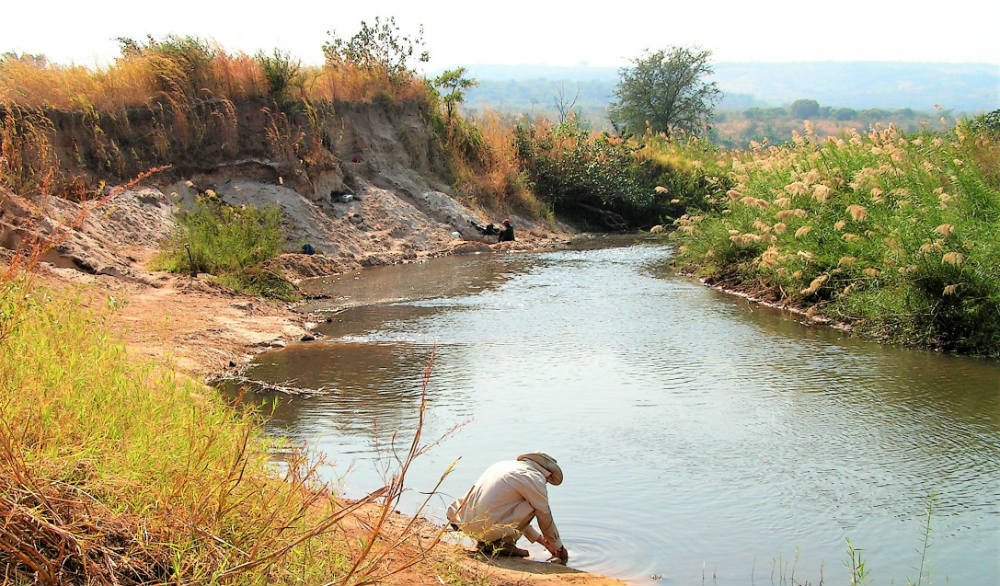Close to half a million years ago, someone built an ancient structure from wood near Kalambo Falls in modern-day Zambia, at a time in human prehistory that archaeologists would previously never have expected.
Now, the recent discovery of remarkably well-preserved materials from this ancient dwelling place reveals what is believed to be the oldest representation of wooden construction ever found. However, at 476,000 years old, the enigmatic structure predates the appearance of Homo Sapiens in Africa, meaning it was built by the hands of an earlier archaic human species, something archaeologists once thought to be impossible.
The new findings, made by a research team with Aberystwyth University and the University of Liverpool, were the subject of a new article featured in the journal Nature detailing the excavation of the remarkably well-preserved ancient structure, offering clues about the technological capabilities of the early humans who built it.


Namely, the structure features evidence of stone tools used to cut the wood, shaping portions of the wood used to build part of what is suspected of being a platform used in the construction of a dwelling place.
The discovery marks a significant departure from earlier thought by archaeologists that the technological use of wood during this period was limited to making projectiles, digging or scraping devices, or making fire.
The discovery is also rare given that the ancient wood used to create the structure was preserved at all since wood, a perishable material, usually rots away and, at best, leaves only indirect evidence of its use. Because of this, archaeologists have traditionally relied mostly on stone tools to help gauge the capabilities of our early human ancestors.
However, the unique environment at Kalambo Falls, which includes permanently high water levels, helped to ensure that the wood recently revealed during excavations at the site was preserved, granting archaeologists a rare glimpse at an activity early humans engaged in at a time in prehistory far earlier than previously thought.
To date materials of such extreme ages, the team relied on optically stimulated luminescence (OSL) dating methods to reveal the last time quartz samples in the surrounding sand had been exposed to sunlight.
“These new dating methods have far-reaching implications – allowing us to date much further back in time, to piece together sites that give us a glimpse into human evolution,” said Professor Geoff Duller from Aberystwyth University in a press release.
“The site at Kalambo Falls had been excavated back in the 1960s when similar pieces of wood were recovered, but they were unable to date them,” Duller said, “so the true significance of the site was unclear until now.”


Significantly, the discovery also raises questions about prevailing ideas that early humans were primarily nomadic, engaging in subsistence patterns that followed available food sources at various times of the year.
With enough food and water in the surrounding environment to provide sustenance year-round, the early people who built the structure at Kalambo Falls seemingly had no need for a nomadic lifestyle, opting instead to construct a semi-permanent shelter the likes of which would not come into common use until much later periods, with the evolutionary dawn of Homo Sapiens in Africa.
Given the site’s age, the team speculates that the builders of the wooden structure might have been Homo Heidelbergensis, an ancient subspecies of archaic human that thrived during the Middle Pleistocene.
Larry Barham, a Professor with the University of Liverpool’s Department of Archaeology, Classics, and Egyptology, called it a discovery that upends previous thinking about early humans.
“This find has changed how I think about our early ancestors,” Barham said.
Barham, who leads the University’s Deep Roots of Humanity Project, an international and interdisciplinary team of scientists exploring changes in the way early humans made and used tools between 500,000 and 300,000 years ago, says that the idea of a literal “stone age” is cast in doubt by such findings.
“Forget the label ‘Stone Age,’ look at what these people were doing,” Barham said in a statement. “They made something new, and large, from wood. They used their intelligence, imagination, and skills to create something they’d never seen before, something that had never previously existed.”
Barham says that the Deep Roots team is now searching the area for additional discoveries that could fundamentally change our views on the past, adding that the early people at Kalambo Falls used tools and natural resources available to them in ways that anticipated behaviors that would not be commonly observed until the emergence of agriculture hundreds of thousands of years later.
“These folks were more like us than we thought,” Barham said.
Barham and his team’s findings were detailed in a recent paper, “Evidence for the earliest structural use of wood at least 476,000 years ago,” that was published in the journal Nature.
Micah Hanks is the Editor-in-Chief and Co-Founder of The Debrief. He can be reached by email at micah@thedebrief.org. Follow his work at micahhanks.com and on Twitter: @MicahHanks.

